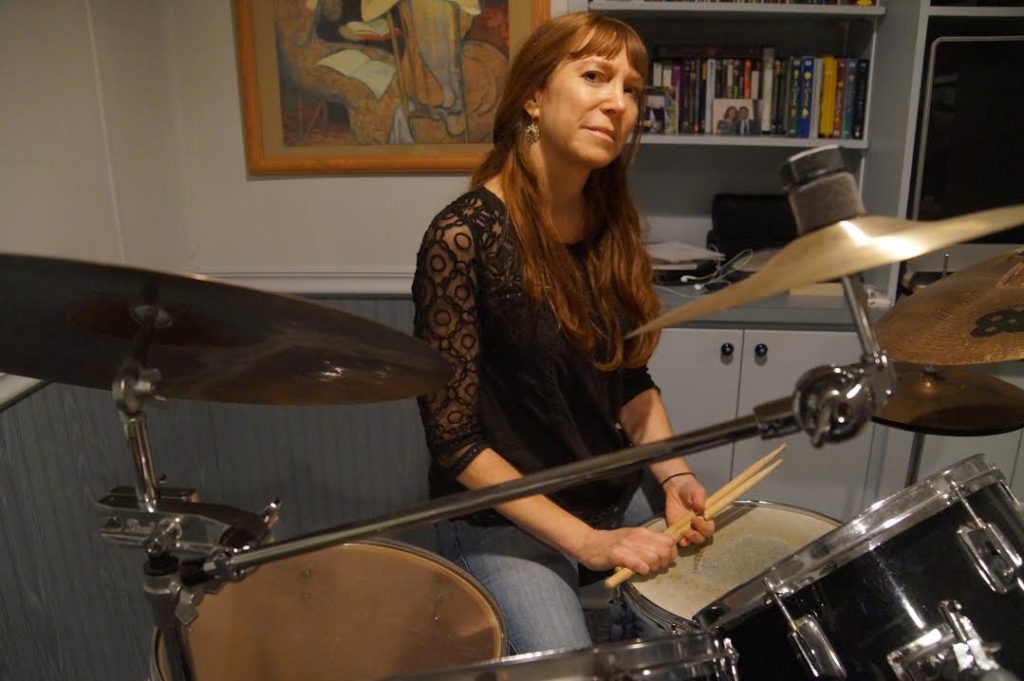Hi Hats: Cindy Hirsch
by Attia Taylor
Drumming is therapy. It is used today as physical therapy in the way our limbs partake in movement and sound construction. The repetition, memorization, and concentration involved are tools for mental restoration and strengthening. Most importantly, at the center of us all, there’s a beat. As cliche as that may sound, no matter who you are or how you live, that beat keeps you alive. What is it though, that stifles your beat or smothers it indefinitely?
Drumming is history. It started somewhere sacred and tribal. From Africa, to Mesopotamia and the neolithic period in China, it compliments many religions, cultures, and subcultures. It will take you to the edges of the earth if you’re willing to go there. Still, aside from its vast history there is a complicated relationship between music and social conformity. What is even more problematic in this relationship is the way a learned pressure to conceal can make you feel far away from yourself and music for that matter. For Cindy Hirsch, it was being embarrassed to dance at a disco, a strict dress code of dresses and skirts only, and dismissing artists like the Carpenters, The Osmonds, and Bread.
Conformity, she tells me, waited for her at the doorstep of her home in Northern New Jersey. Compliance, whether it be religious or otherwise, can shape your decisions, perceptions, and attitude. It froze the ground underneath Cindy who grew up Orthodox Jewish with parents who are both Holocaust Survivors, from Czechoslovakia and France. The standards that Cindy lived by early on had stifled her sense of creativity in Jewish day school, followed her through her teenage and young adult life and stayed with her for many many years. “This idea of conformity, from early childhood for religious reasons or as a teenager in public school for social acceptance is pretty important as to why I later picked up the drums.”
The beat is in there, you just have to listen. When New Wave appeared in the late 70’s and post-punk bands like Adam and the Ants, The Talking Heads, Duran Duran, and Billy Idol hit the scene, “It was like I woke up from a deep sleep,” Cindy said. She became enamored with drummers Ringo Starr and Keith Moon of The Who. “My true drive and inspiration to playing the drums was Keith Moon of The Who. Keith Moon’s spontaneity, craziness, and style of drumming just made him incredibly inspirational to me,” she said. Her sense of self had shifted away from the strict code that she was brought up on and a new life began to open up.
Eventually, Cindy decided to use the energy she had repressed for much of her life and surprised her family one evening when came home with a Vino scooter and a shiny new drum kit. “I reached the age of 40, mother of 3 kids by then, and was ready to break free from the conformist mold that had pretty much reflected my life till then,” Cindy said. “I guess it was my personal rebellion against the ‘cookie cutter’ mold and the standards I thought I should be living my life by.”
Quite possibly, it’s less about how conformity stifles creativity and expression and more about keeping it down deep somewhere until the right song, drummer, or beat awakens your need to express. So much of drumming depends on your energy and how willing you are to let go. “My ideal environment is to be alone in my basement, put on my headset and blast some tunes from my iPod and play along. I took a hiatus for health reasons for the past 3 years but have recently picked up my sticks again and there’s no way I am putting them down. It’s so affirming, empowering and exhilarating.”
Hi Hats is a Tom Tom Mag feature on drummers who are 50 years old and older. Drummers can be new to the instrument or have played forever.


